What to visit in Breda di Piave?
Charming, Breda di Piave is a discreet city, with few pretensions, but that wins over those who visit it in an almost poetic way. With interesting attractions, Breda di Piave is little known, but deserves to be considered by those traveling through the Veneto region. Today we will know what to visit in Breda di Piave? Here at Your Travel to Italy with Ana Patriciayou make the trip of your dreams!!! ALSO: see our “Accommodation in Italy – Tips for your holidays!”
Video about Breda di Piave (by drone)
(Source: Edoardo.maglia)
1) What to visit in Breda di Piave? VISIT THE PARISH CHURCH OF SAINT PAUL
The city’s fabulous churches! Breda di Piave offers visitors fascinating churches full of stories. One of the most famous (and beautiful!) is the Parish Church of St Paul. Its construction dates back to the 11th century and, in fact, its former belfry adjacent to the current church is evidence of an old feudal settlement from the 10th century (probably adapted to a monastery). The current church dates back to 1877, the year it was completely restored; the church was consecrated only a century later, in 1977.
A little more about the Church…
The church is a Romanesque construction and has three naves. Inside the building there is a valuable Calidian organ, the baptismal font (in the left aisle) which was built in 1960, and above the baptismal font there is a painting on canvas representing Jacob’s dream; further on you can see a painting depicting Abraham’s sacrifice.
Madonna del Rosario
When we reach the end of the nave, we find the splendid altar of Madonna del Rosario. The ceiling frescoes, which are the work of Prof. Beni and represent the conversion of São Paulo, were made in 1903. At the end of the central nave you can see the presbytery with a splendid wooden choir from the year 1761 which was then restored in the early 1800s. The altar was built between 1765 and 1768.
The altarpiece above the stucco canopy in red and gold represents Our Lady and Baby Jesus among the angels with the Holy Apostles Peter, Paul and John; it was painted in Venice, in 1564, by Master Giovanni Pietro Meloni and, later, remodeled in 1877 and 1890. Also in the presbytery, on the side walls, there are two other representative altarpieces: one of Saints Anthony, Valentine, Liberalis and Francis, and the another shows Our Lady and Saints Joseph, Joachim and Philip Neri.
Church of Santa Croce of the Salesian Monastery in Brescia
In the right aisle is the original wooden pulpit of the Church of Santa Croce of the Salesian Monastery in Brescia, which was donated to the parish of Breda di Piave in 1989 by the Servants of Charity of Brescia. The altar contains a wooden statue of the Apostle San Paolo, patron of the church. A little further on, on your right, you can see a painting depicting Tobias’ journey. At the end of the nave there is another altar that was built by Pietro Longo of Venice and is dedicated to St. Anthony of Padua and the Saints Joseph, John the Evangelist, Valentine, Francis and Liberalis. It is a beautiful church and, without a doubt, a must-see!
Other interesting churches are:
- Oratorio delle grazie, Chiesetta di San Giovanni, Chiesa parrocchiale di S. Bartolomeo, Chiesa parrocchiale di Pero (San Colombano Abate).
2) What to visit in Breda di Piave? VISIT THE SPRINGS
For those who love nature, it is good to know that Breda di Piave is located in the so-called strip of springs, with 40 km of fountains. These springs create tributaries of the Sile River, Europe’s longest river of springs, while those of Saletto and San Bartolomeo generate tributaries of the Piave River.
The “bubbles”
The springs reach depths that vary between 1.50 – 1.80 m, but all with a huge amount of mud and silica sand. A very particular phenomenon are the “bubbles” formed by gases that can reach an impressive 30 cm in diameter. The water that comes out of the springs has a temperature around 11°C, which also influences the fauna present in the area. The low temperature is ideal for fish such as eels, carp, catfish and shrimp to live here. The town also ‘receives’ wild ducks, mallards and moorhens.
3) What to visit in Breda di Piave? VISIT THE MULINO DELLA SEGA
Be sure to visit the Mulino della Sega. It is a 20-minute drive from Breda and is located on an islet in the Piave River, in San Bartolomeo. Today, it is a monument to the fallen of the great war and, in the same village, in Piavesella, we find the deactivated, but not less charming, Marchesini mill.
4) What to visit in Breda di Piave? VISIT THE HISTORICAL CENTER
Be sure to visit the Historic Center of Piave; despite being small and not offering many attractions, the city’s architecture is wonderful! There are also excellent places such as bars, restaurants and shops. In fact, every historic center in Italy deserves a visit!!!
A bit of the history of Breda di Piave
Let’s get to know a little about Breda di Piave’s history: the city was born with the discovery of carved flints and bronze fibulae, which would testify to the presence of humans in the municipality. The period attributed to the findings is the Paleoveneto period – a term used to designate the prehistoric era of the Veneto region. The discovery of amphorae to store grain, tombs and a beautiful cylindrical altar, would confirm, however, the thesis that the city was – in fact – inhabited in Roman times.
The name Breda di Piave
The name Breda di Piave, probably derives from Predia, which would be the word used to designate the farms that were offered as a reward to the veterans discharged of the Roman army; it was a way the government found to reward soldiers for their dedication and service. The territory was depopulated during the barbarian invasions and came back to life in the year 1000, when the city began to be reborn around a castle, which was built by the bishops of Treviso and later became part of the Templar order.
In the 12th century, with the construction of the Church of San Giovanni, a milestone was established with the birth of Pero di Sopra. The town’s story tells that Saletto and San Bartolomeo were originally villages covered with swamp material; the names of Saletto and Villa del Bosco appear in documents only in the 13th century. This diversity of origins suggests that the villages were totally independent from each other – this until the 15th century, when they became part of Treviso and therefore depended on who governed the city. It was a time of fighting and names like Da Romano, Da Camino, Dalla Scala, Da Carrara were involved in wars to maintain power. In the early years of the 15th century, the villages saw the passage of the Treviso area to the command of the Serenissima (Serenissima Republic of Venice: A powerful state in northeastern Italy that existed between the 19th and 18th centuries).
The Decline of the Serenissima
With the decline of the Serenissima, the territory followed the fate of Marca and in 1798 was assigned to the Austrian Empire, being included in the Napoleonic Kingdom of Italy in 1805. It was then that Napoleon gave the region of Veneto almost an administrative structure of its own, establishing different municipalities and Breda di Piave then became a municipality with Pero, Saletto and San Bartolomeo as fractions.
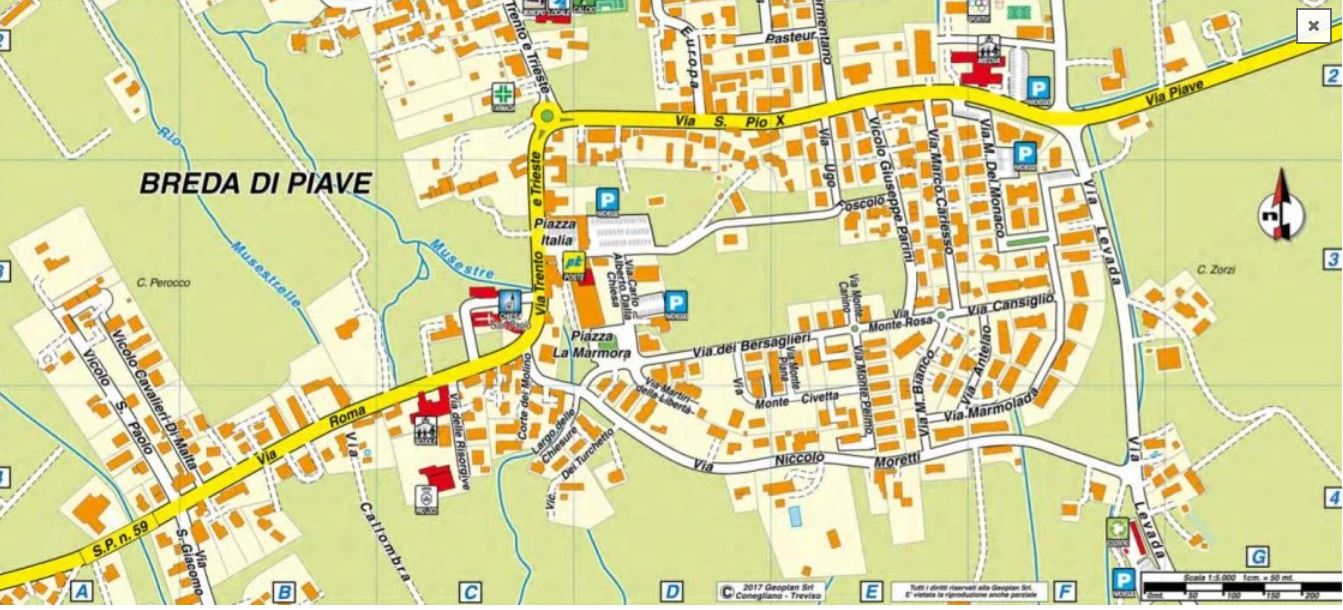
Download the map of Breda di Piave now
CLICK HERE!
Curiosity…
With 220 km long, the Piave River rises on the southern slope of Mount Peralba, flowing into the Adriatic Sea near Cortellazzo. The River is famous because it was the scene of battles between 1917 and 1918 – during the First World War – and consecrated to the homeland for the victory over the Austrians. Around here there are several sources of drinking water, which are fed by artesian wells that extract directly from the underlying aquifers at depths ranging from 35 to 110 meters. To see where they are you can visit this site: Territory Fountains.
The City Fit for Cyclists
Breda di Piave received the recognition of City Fit for Cyclists – a title that comes directly from FIAB, the Italian Federation of Friends of the Bicycle, and included Piave in the list of cities that have implemented active policies for sustainable mobility, the promotion of cycle paths and the development of environmental practices for future generations in the field of transport. Breda di Piave makes the list of “Yellow Cycling Flag” cities, which means that it has been approved as a city that can be perfectly visited by bicycle and meets all the needs of cyclists.
“LA PIAVE” bike path
The completion of the incredible “La Piave” cycle path and the design of the tourist rest area also include the Riviera, and the respective services to users; the works are carried out by the Regional Authority in partnership with other companies. There is no forecast for full completion of the project.
A little more about the territory
The municipality of Breda di Piave is located on the Treviso plain in the northeast. Its territory extends over 25.6 km², between 11 and is only 27 m above sea level. In addition to the capital, there are four other villages: Pero, Saletto, San Bartolomeo and Vacil and the Campagne locality. It borders Maserada sul Piave, Carbonera and San Biagio.
Map of Fractions of Breda di Piave (Source: Comune di Breda di Piave)
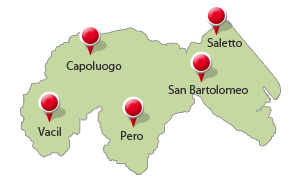
Location of Piave in the Province of Treviso
(Source: Google Maps via Comune di Breda di Piave)
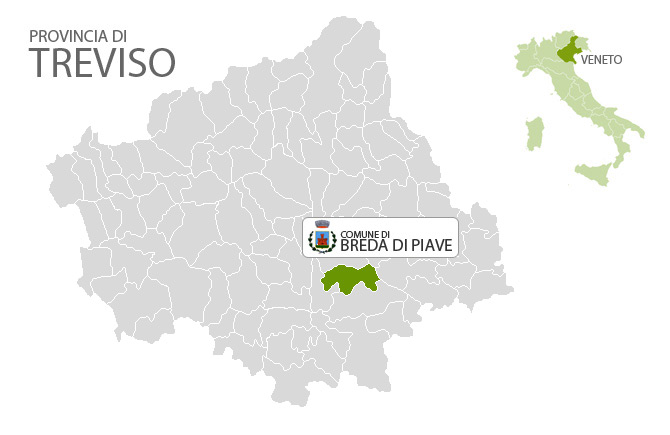
How to get to Breda di Piave?
The best option is to go by car!!! Take exit A27 (Venice-Belluno) at Treviso Nord – Vascon di Carbonera. You can also use the following paths:
- State road 53 (Vicenza-Portogruaro) to San Biagio di Callalta, where you will continue following the signs for Saletto and Breda di Piave.
- State road 13 (for those coming from Conegliano) to signs for Varago and Breda di Piave.
- State road 13 (also for those coming from Mestre) to Treviso to continue along secondary roads (Treviso, Carbonera, Breda) to Breda di Piave.
Golden Tip
- It is possible to make a round trip to Breda di Piave from Venice. Leave Venice via the Mestre/A57 ring road on Via Strada Regionale 11 Padana Superiore; from there, take the A27 (Via Sante Cancian/SP92 in Lancenigo). Take the Treviso Nord exit via the A27. Then head to SP92, take SP115, SP59 and Via Roma – follow Breda di Piave. The journey takes 40 minutes!
Traveling by car in Italy
How about if I give you a rental car option? Are you ready for it? If you are renting a car be sure to read our posts in the section Driving in Italy on the blog Your Travel to Italy. In addition to car itinerary tips, we have everything about signage, tolls, roads and many more tips.
Don’t know where to rent the car?
We have a partner that can help you: Rent Cars! Have you ever thought about renting a car in Italy, without leaving your home? Click on the banner below to learn more! Search, compare and choose!
Watch this video and learn: What is the average cost of a day in Italy?
Subscribe to our channel and receive more videos with information and tips about Italy. Don’t forget to leave that Like;)
Conclusion
What to visit in Breda di Piave? Breda di Piave is not a city with huge tourist potential, it is not what most tourists are looking for and that is exactly why it is so charming and worth a visit: you will be enchanted by the simplicity, charm and affection with which it this city will welcome you!
Are you insecure?
If you feel insecure or have no time, and need help to organize your trip, do not hesitate to look for me! I will love to help you make your dream trip to Italy. And how can I do that? Continue reading this post until the end and you will understand how can we make your life and journey easier.
Did my post help you? If yes, make sure to leave your comment below, but if you still have questions, just leave them as a comment below and I will reply, OK?
An Extra Help for your Trip
The best content from Your Travel to Italy!
Learn more about our tours in Italy right now!
- What to visit in Italy in 10 days?
- The ten must-see places in Tuscany?
- The best tips to save on your trip to Italy?
- What are the 10 most visited cities in southern Italy?
- Airports in Italy? How to get to your hotel? (Venice, Milan, Rome, Florence)
- What to do in 1/2/3/4 days in the main Italian cities?
- The best tips on food in Italy (wines, typical food, enogastronomy tours)
- How to get from Fiumicino Airport to Rome downtown?
- Your Travel to Italy: 10 tips for traveling through Italy!
Best regards from Italy

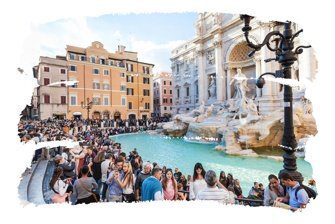
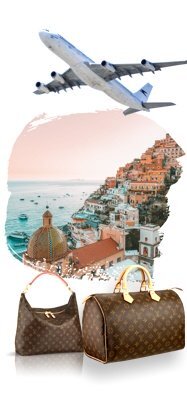
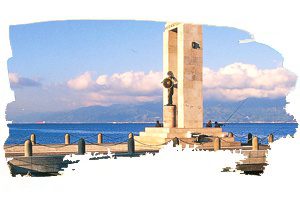

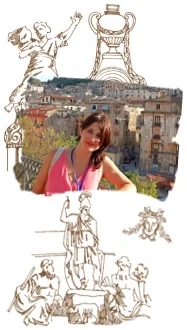

 Save money!
Save money!